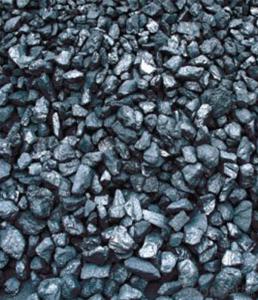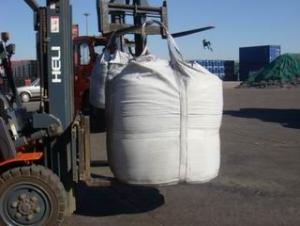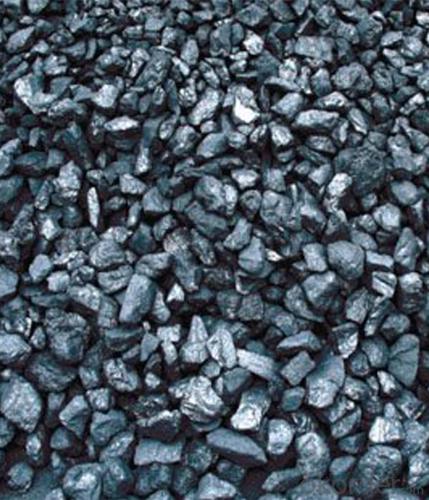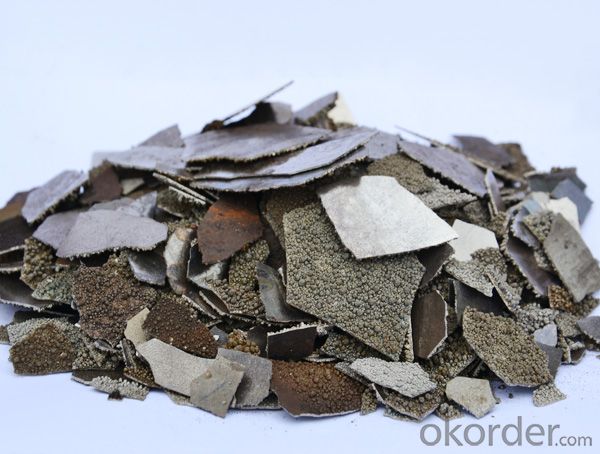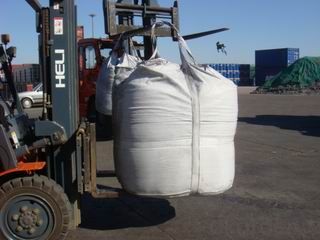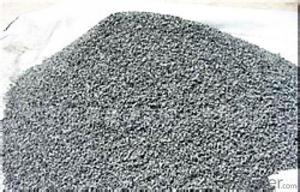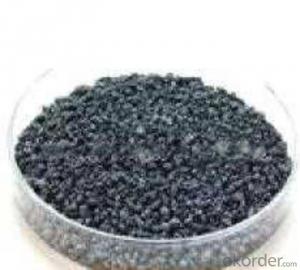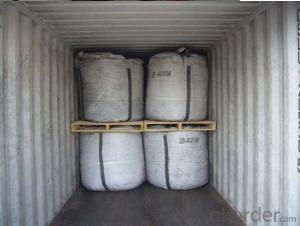FC 92% Calcined Anthracite Used In Steel Making
- Loading Port:
- China Main Port
- Payment Terms:
- TT or LC
- Min Order Qty:
- -
- Supply Capability:
- -
OKorder Service Pledge
OKorder Financial Service
You Might Also Like
FC 92% Calcined Anthracite Used In Steel Making
•Feature:
All of our goods are made in the best quality of world famous Ningxia Taixi Washed Anthracite Coal. All of our products are with High carbon, Low ash, low sulphur, Low Moisture.
•Application:
The Calcined Anthracite Coal/Gas Calcined Anthracite Coal/Carbon Raiser is mainly used in steelmaking in electrical stove, screening water, shipbuilding sandblast to remove rust. It can reduce the cost of steelmaking effectively by replacing the traditional petroleum coke of carburant.Also can improve the Carbon content in steel-melting and Ductile iron foundry.
•Experience:
Our Factories have been producing Carbon additive, Electrically Calcined Anthracite Coal, Calcined Anthracite Coal,Gas Calcined Anthracite Coal for more than 20 years.And we’ve been in carbon products exporting business for more than 10 years before our this company newly established.
SPECIFICATION
PARAMETER UNIT GUARANTEE VALUE | |||||
F.C.% | 95MIN | 94MIN | 93MIN | 92MIN | 90MIN |
ASH % | 4MAX | 5MAX | 6MAX | 7MAX | 8MAX |
V.M.% | 1 MAX | 1MAX | 1.5MAX | 1.5MAX | 1.5MAX |
SULFUR % | 0.5MAX | 0.5MAX | 0.5MAX | 0.5MAX | 0.5MAX |
MOISTURE % | 0.5MAX | 0.5MAX | 0.5MAX | 0.5MAX | 0.5MAX |
Size can be adjusted based on buyer's request.
Package:
1: In MT bags
2: IN 25kgs bags
3: IN 10KG bags
4: or as buyer's request
Pictures of Calcined Anthracite:

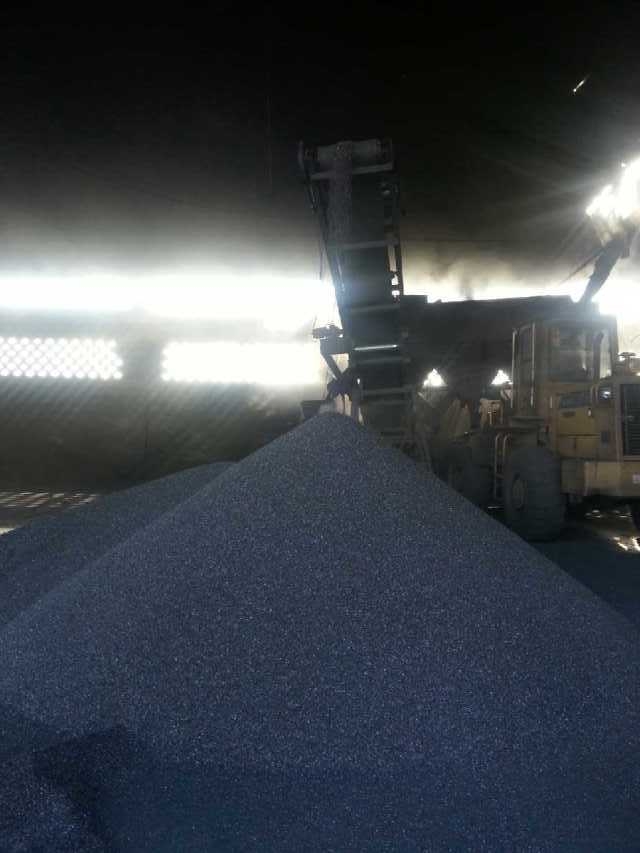
- Q: What is carbon emission and what harm does it do? How can carbon dioxide be prevented?
- Carbon deposition reaction:CH4 = kJ/mol C+H274.92CO = CO2+C +172.4 kJ/mol on.The main cause of carbon analysis is that the ratio of water to carbon is too low, so that the rate of carbon removal is lower than the rate of carbon depositionThe above chemical reactions are reversible reaction, from the analysis of thermodynamics, if the increase in temperature or reducing system pressure, increase the possibility of methane decomposition reaction type is CH4 C+H2 produce coke; possibility of CO reaction 2CO = CO2+C and CO = C + H2 reaction +H2O produce coke decrease. If the temperature is reduced or increased the pressure is on the contrary. The effect of temperature on coke reaction is very large, to avoid the [wiki] [/wiki] carbon catalyst must select the appropriate temperature, avoid carbon deposition area.
- Q: What are the impacts of carbon emissions on coral reefs?
- The impacts of carbon emissions on coral reefs are significant and detrimental. Increased levels of carbon dioxide in the atmosphere lead to ocean acidification, which disrupts the delicate balance of the reef ecosystem. Acidic conditions hinder the ability of corals to build their calcium carbonate skeletons, making them more vulnerable to erosion and bleaching. Additionally, rising temperatures caused by carbon emissions contribute to coral bleaching events, where corals expel their symbiotic algae, leading to their eventual death. Overall, carbon emissions pose a major threat to coral reefs, jeopardizing their biodiversity and ecological functions.
- Q: How does carbon affect the pH of water bodies?
- Carbon can have a significant impact on the pH of water bodies. When carbon dioxide (CO2) from the atmosphere dissolves in water, it forms carbonic acid (H2CO3). This process is known as carbonation and occurs naturally in water bodies. Carbonic acid is a weak acid and it plays a crucial role in buffering the pH of water bodies. The presence of carbonic acid in water can lower the pH, making it more acidic. This is because carbonic acid dissociates into hydrogen ions (H+) and bicarbonate ions (HCO3-). The higher the concentration of hydrogen ions, the lower the pH of the water. Therefore, carbonic acid contributes to the acidity of water bodies. Additionally, carbonic acid can undergo further dissociation to form carbonate ions (CO32-). These carbonate ions can react with hydrogen ions, effectively reducing the concentration of hydrogen ions and increasing the pH of the water. This process is called carbonation and it acts as a buffer, helping to stabilize the pH of the water. Human activities, such as burning fossil fuels and deforestation, release excessive amounts of carbon dioxide into the atmosphere. This leads to an increase in the concentration of carbonic acid in water bodies, which in turn lowers the pH. This phenomenon is known as ocean acidification and it can have detrimental effects on marine life. Decreased pH caused by excess carbon can harm aquatic organisms, especially those with calcium carbonate shells, such as corals, mollusks, and some plankton species. The more acidic water dissolves their shells, making them more vulnerable to predation and reducing their ability to build and maintain their protective structures. In conclusion, carbon can significantly affect the pH of water bodies through the formation of carbonic acid. While carbonic acid contributes to the acidity of water, it also acts as a buffer, helping to stabilize the pH. However, excessive carbon dioxide emissions from human activities can lead to ocean acidification, impacting marine life and the overall health of water ecosystems.
- Q: Glucose contains resveratrol (C14H12O3) to determine the mass ratio of resveratrol and carbon dioxide of the same quality as carbon dioxide
- They are x and y, containing carbon equal, according to the mass of an element = the mass of a compound * the elementMass fractionFor C14H12O3, the carbon mass fraction is C%=12*14/ (12*14+12+16*3) *100%=73.68%For CO2, the mass fraction of carbon is 12/ (12+16*2) =27.27%There is x *73.68%=y*27.27%So there's X: y =57:154
- Q: How does carbon impact the prevalence of wildfires?
- There are several ways in which carbon affects the occurrence of wildfires. First and foremost, carbon dioxide (CO2) is a greenhouse gas that contributes to climate change. As the concentration of CO2 increases in the atmosphere, temperatures rise, resulting in drier conditions in many areas. These dry conditions create a more favorable environment for the ignition and spread of wildfires. Moreover, carbon plays a significant role in the amount of fuel available to feed wildfires. Carbon-based materials, such as dead vegetation, trees, and other organic matter, serve as the main source of fuel for fires. As carbon accumulates in ecosystems, either naturally or through activities like deforestation, the potential fuel for wildfires increases. This increased fuel load can lead to more frequent and intense fires. In addition, carbon has an impact on the health and vitality of forests. Higher levels of atmospheric CO2 can enhance plant growth, resulting in denser vegetation. Although this may seem beneficial, it actually contributes to the intensity and severity of wildfires. Denser vegetation means there is a greater amount of fuel available, especially when combined with the dry conditions caused by climate change. This combination becomes a recipe for more destructive fires. Lastly, the combustion of carbon-based materials during wildfires releases large amounts of carbon dioxide into the atmosphere. This creates a positive feedback loop, as the increased carbon emissions contribute to further climate change, which, in turn, worsens the conditions for wildfires. In summary, carbon plays a critical role in determining the occurrence and severity of wildfires through its impact on climate change, fuel load, forest health, and the release of greenhouse gases during combustion. It is essential to address carbon emissions and implement effective forest management practices in order to mitigate the risks and consequences associated with wildfires.
- Q: What are the consequences of increased carbon emissions on human migration patterns?
- Increased carbon emissions have significant consequences on human migration patterns. One of the most prominent effects is the exacerbation of climate change, leading to more frequent and intense natural disasters such as hurricanes, floods, and droughts. These extreme weather events can devastate communities, destroy infrastructure, and disrupt livelihoods, forcing people to migrate in search of safer and more stable environments. Rising sea levels, another consequence of carbon emissions, pose a significant threat to coastal regions and island nations. As sea levels continue to rise, low-lying areas become more prone to flooding and coastal erosion, making them uninhabitable. This displacement of populations, commonly referred to as climate refugees, can lead to mass migrations, putting additional strain on resources and infrastructure in destination areas. Moreover, carbon emissions contribute to changes in temperature and precipitation patterns, which can have a profound impact on agricultural activities. Shifts in growing seasons, increased frequency of droughts or floods, and the spread of pests and diseases can negatively affect crop yields and food security. This disruption in the availability of food and resources can push vulnerable populations to migrate in search of better livelihoods and food sources. The consequences of increased carbon emissions on human migration patterns also extend to health issues. Climate change can lead to the spread of diseases, such as malaria and dengue fever, as well as worsen air pollution, exacerbating respiratory problems. These health risks can force individuals and communities to relocate to areas with better healthcare infrastructure and conditions. In summary, increased carbon emissions have wide-ranging consequences on human migration patterns. The intensification of climate change, rising sea levels, disruptions to agriculture, and health risks all contribute to the displacement of populations, creating a need for individuals and communities to seek safer and more stable environments. Addressing carbon emissions and mitigating climate change is essential to minimize the negative impacts on human migration and ensure a sustainable future.
- Q: What are the impacts of carbon emissions on the stability of tundra ecosystems?
- The impacts of carbon emissions on the stability of tundra ecosystems are significant and wide-ranging. Carbon emissions, primarily in the form of greenhouse gases such as carbon dioxide and methane, contribute to global warming and climate change. As a result, the tundra ecosystems, which are particularly vulnerable to temperature changes, experience several negative effects. Firstly, increased carbon emissions lead to rising temperatures, causing the permafrost in the tundra to thaw. Permafrost is a layer of permanently frozen soil that acts as a foundation for the tundra ecosystem. When it thaws, the stability of the entire ecosystem is compromised. The ground becomes unstable, leading to collapsing landscapes, landslides, and altered drainage patterns. This can disrupt plant and animal habitats, as well as impact the distribution of water resources. Secondly, as permafrost thaws, organic matter that has been frozen for thousands of years starts to decompose. This decomposition process releases large amounts of carbon dioxide and methane into the atmosphere, further exacerbating the greenhouse effect. This positive feedback loop accelerates climate change and contributes to the overall increase in carbon emissions. Furthermore, the thawing of permafrost also affects the vegetation in tundra ecosystems. Many plant species in the tundra rely on the permafrost layer for stability and nutrient availability. With its degradation, plants face difficulties in establishing and maintaining their root systems. This, in turn, reduces plant productivity and alters the composition of plant communities. Changes in vegetation can impact wildlife, such as reindeer, caribou, and migratory birds, which depend on specific plant species for food and shelter. Additionally, the increased thawing of permafrost releases previously trapped pollutants and contaminants, which can further harm the stability of tundra ecosystems. These pollutants, such as heavy metals and toxic chemicals, can enter waterways and affect aquatic life, disrupting the delicate balance of the ecosystem. Overall, carbon emissions contribute to the destabilization of tundra ecosystems through the thawing of permafrost, alteration of vegetation, release of greenhouse gases, and contamination of water resources. These impacts not only affect the tundra's unique biodiversity but also have implications for global climate change. It is crucial to reduce carbon emissions and mitigate the effects of climate change to preserve the stability and integrity of these fragile ecosystems.
- Q: What are the consequences of increased carbon emissions on global trade?
- Increased carbon emissions have significant consequences on global trade. One of the most immediate impacts is the potential for stricter environmental regulations and carbon pricing mechanisms imposed by countries and international agreements. This can lead to higher costs for industries and businesses that rely heavily on carbon-intensive activities, such as manufacturing and transportation. As a result, companies may face increased production costs, which can be passed on to consumers in the form of higher prices for goods and services. This can have a negative effect on global trade, as higher costs may reduce demand and hinder international competitiveness. Additionally, industries that do not comply with environmental regulations or carbon reduction targets may face trade barriers or sanctions, further limiting their ability to participate in global trade. Another consequence of increased carbon emissions is the potential for climate change-related disruptions to supply chains. Rising temperatures, extreme weather events, and sea-level rise can damage infrastructure, disrupt transportation routes, and affect the availability and quality of resources. This can lead to delays in production and shipping, increased transportation costs, and a higher risk of supply chain interruptions. These disruptions can have far-reaching impacts on global trade, affecting the flow of goods, services, and investments across borders. Furthermore, increased carbon emissions contribute to global warming, which can have long-term consequences for agricultural productivity and food security. Changes in temperature and precipitation patterns can lead to crop failures, reduced yields, and shifts in agricultural production regions. This can disrupt global food supply chains and lead to price volatility, affecting trade flows and potentially exacerbating food shortages and inequalities. In summary, increased carbon emissions have several consequences on global trade. Stricter environmental regulations and carbon pricing can increase costs for industries, potentially reducing their competitiveness. Climate change-related disruptions to supply chains can lead to delays, increased costs, and interruptions in trade. Lastly, the impact of global warming on agricultural productivity can have significant implications for food security and trade in agricultural commodities.
- Q: How does carbon dioxide affect the formation of clouds?
- Carbon dioxide plays a significant role in the formation of clouds through its impact on Earth's climate system. As a greenhouse gas, carbon dioxide traps heat in the atmosphere, leading to an overall increase in global temperatures. This rise in temperature alters various atmospheric processes, including cloud formation. One of the key ways carbon dioxide affects cloud formation is by influencing the water cycle. Warmer temperatures caused by increased carbon dioxide levels lead to enhanced evaporation of water from the Earth's surface. This increased evaporation results in a higher amount of water vapor in the atmosphere, which serves as the primary ingredient for cloud formation. Additionally, carbon dioxide affects cloud formation indirectly by influencing atmospheric stability and the vertical movement of air. Higher concentrations of carbon dioxide can alter the temperature profile of the atmosphere, with the lower atmosphere warming more than the upper atmosphere. This temperature difference can lead to changes in air density, causing air to rise or sink. Rising air creates conditions favorable for cloud formation, while sinking air inhibits it. Furthermore, carbon dioxide affects the size and properties of cloud droplets. Increased carbon dioxide concentrations can lead to changes in the microphysical properties of clouds, such as droplet size and concentration. Studies suggest that higher concentrations of carbon dioxide can result in smaller cloud droplets, potentially affecting cloud lifetime and precipitation patterns. It is important to note that the relationship between carbon dioxide and cloud formation is complex and still an active area of research. Scientists continue to study the intricate interactions between atmospheric gases, cloud formation, and climate change to better understand the future implications of carbon dioxide emissions on cloud dynamics and the overall climate system.
- Q: What are the effects of carbon emissions on the stability of river systems?
- Carbon emissions have significant effects on the stability of river systems. The release of carbon dioxide and other greenhouse gases into the atmosphere contributes to global warming, which in turn affects the hydrological cycle and leads to changes in river systems. One of the primary effects of carbon emissions on river systems is increased water temperature. As the planet warms, the average temperature of water bodies, including rivers, rises. Higher water temperatures have detrimental impacts on aquatic ecosystems, leading to reduced oxygen levels and increased susceptibility to disease for many species. This can result in the decline or even extinction of certain fish and other aquatic organisms, disrupting the delicate balance of river ecosystems. Furthermore, carbon emissions contribute to the melting of glaciers and polar ice caps, leading to an increase in water volume in rivers. This can cause river systems to experience more frequent and severe flooding events. The excess water can erode riverbanks, leading to the loss of valuable land and infrastructure. It can also result in the displacement of communities living along riverbanks, exacerbating social and economic issues. Additionally, carbon emissions contribute to the acidification of water bodies, including rivers. Increased carbon dioxide in the atmosphere leads to higher levels of dissolved CO2 in rivers, forming carbonic acid when combined with water. Acidic water can harm aquatic life, particularly organisms with calcium carbonate shells or skeletons, such as mollusks and certain types of plankton. This can disrupt the food chain and have cascading effects on the entire river ecosystem. Overall, the effects of carbon emissions on the stability of river systems are profound. Increased water temperatures, flooding events, and acidification pose significant threats to the biodiversity and ecological balance of rivers. It is crucial to mitigate carbon emissions and adopt sustainable practices to preserve the stability and health of these vital ecosystems.
Send your message to us
FC 92% Calcined Anthracite Used In Steel Making
- Loading Port:
- China Main Port
- Payment Terms:
- TT or LC
- Min Order Qty:
- -
- Supply Capability:
- -
OKorder Service Pledge
OKorder Financial Service
Similar products
Hot products
Hot Searches
